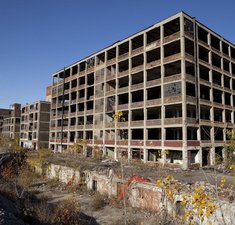Featured Quizzes
User Quizzes
Create Quiz
Data and Charts
Badges and Games
About JetPunk
JetPunk Shop
Dark Mode
Random Mode
Keyboard shortcut: Command/Ctrl + Shift + R

Poorest Metro Areas in the U.S.
There are 56 metro areas in the United States with a population over 1 million. Which ones have the lowest median household income?
For the year 2021, according to the U.S. Census
Rate:
Featured Quiz
Last updated: October 18, 2022
You have not attempted this quiz yet.
More quiz info >>
| First submitted | October 18, 2022 |
| Times taken | 11,797 |
| Average score | 50.0% |
| Rating | 4.38 |
4:00
Enter answer here
0
/ 20 guessed
Time Used
00:00
Best Time
00:00
The quiz is paused. You have remaining.
Scoring
You scored / = %
This beats or equals
% of test takers
also scored 100%
The average score is
Your high score is
Your fastest time is
Keep scrolling down for answers and more stats ...
|
|
|
New and Popular
Save Your Progress
Copyright H Brothers Inc, 2008–2024
Contact Us | Go To Top | View Mobile Site

so yes, you do
At any rate, I stand by excluding Puerto Rico from Jetpunk quizzes as a matter of standardisation. Of course if its legal status changed, then it should obviously be included. Frankly, given that Hawaii is a state, it's strange that Puerto Rico isn't, given the latter is both more populous and much closer to the US mainland. But that's another matter.
Actually, it'd be interested to see how this goes with some sort of local cost of living or purchasing power adjustment. I imagine a lot of California would look a lot worse.
Nonetheless, kinda surprised by the Floridian inclusions. Did not realise major metro areas there were at the lower end of the income spectrum.
Of course poor is relative - my Googling suggests both Paris and London would make this list. On the other hand, I don't think any million plus metro area in Australia would (though all would suffer hard from cost of living adjustments).
Toy Example: Suppose you have 10 people in NYC and 10 people in Memphis all making 60K. In a vacuum, these groups are equally poor. As others have noted, 60K goes much further in Memphis, so the NYC group is, practically speaking, poorer. However, the big flaw is that because they are poorer, the NYC people are much more likely to need roommates and congregate into "high-earning" households. Out of our groups of 10, most of the ones in Memphis can probably afford to live alone and so those 10 divide into 7 or 8 households (60K median) while the NYC group probably splits into 3 or maybe 4 households (120K+ median). From the data point used in the quiz, the NYC group is then significantly wealthier despite being, at best, on the same level as the Memphis group.
Here are the poorest metro areas by cost-of-living-adjusted median household income (1m+ population metros only):
1. Honolulu ($57,408)
2. Miami ($57,960)
3. Los Angeles ($58,679)
4. Fresno ($60,110)
5. New Orleans ($61,512)
6. Tampa ($62,082)
7. Tucson ($62,095)
8. Las Vegas ($63,234)
9. Memphis ($63,311)
10. Orlando ($64,039)
11. Buffalo ($64,536)
12. San Francisco ($64,952)
13. New York City ($65,945)
14. Providence ($66,178)
15. Riverside ($66,338)
16. San Diego ($66,816)
17. Birmingham ($66,951)
18. Tulsa ($68,854)
19. Rochester, NY ($68,857)
20. Jacksonville ($69,085)
1. Washington, DC ($91,886)
2. Raleigh ($85,560)
3. Sacramento ($84,384)
4. Minneapolis ($82,954)
5. Seattle ($81,638)
6. Austin ($81,173)
7. Denver ($80,924)
8. Kansas City ($80,677)
9. Baltimore ($80,656)
10. San Jose ($80,629)
11. Hartford ($78,490)
12. St. Louis ($78,336)
13. Chicago ($78,088)
14. Indianapolis ($77,854)
15. Philadelphia ($77,376)
16. Atlanta ($77,357)
17. Dallas ($77,132)
18. Grand Rapids, MI ($76,856)
19. Salt Lake City ($76,777)
20. Cincinnati ($76,643)